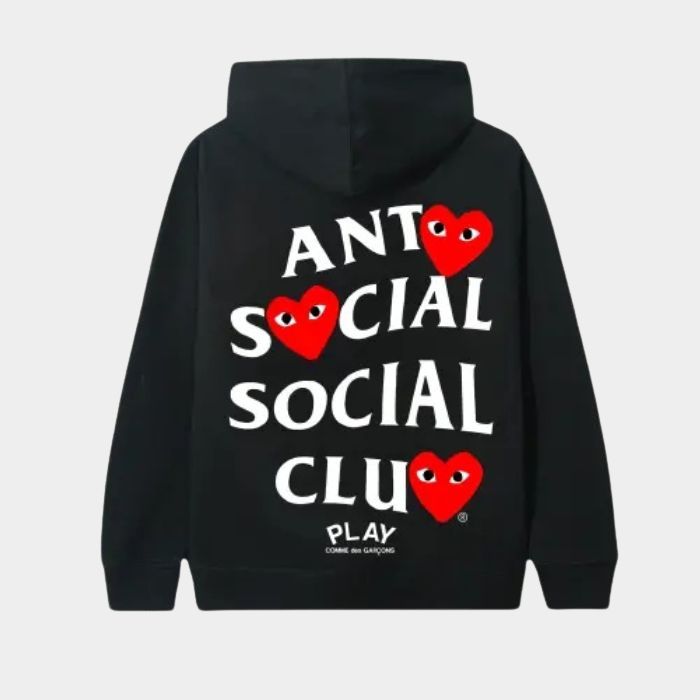-
Ροή Δημοσιεύσεων
- ΑΝΑΚΆΛΥΨΕ
-
Σελίδες
-
Blogs
-
Courses
-
Ταινίες
Why Comme Des Garcons Is a Cultural Phenomenon

In the early 1970s, Rei Kawakubo was not chasing trends—she was dismantling them. Tokyo became the birthplace of her vision, a place where Comme Des Garçons emerged as an anomaly in a sea of conformity. Her designs challenged beauty standards, favoring raw edges and stark black over polished glamour. By the time the brand hit Paris in the ’80s, it shocked the establishment. Critics called it “anti-fashion,” but Kawakubo leaned into that label and turned it into a badge of honor.
Breaking Fashion’s Conventional Mold
What makes Comme Des Garcons iconic is its refusal to play safe. The garments often reject symmetry, embrace unusual proportions, and celebrate imperfection. Holes in sweaters, jackets with misplaced buttons, skirts cut like unfinished puzzles—this wasn’t clothing, it was provocation. Kawakubo’s work asks people to rethink what fashion can be. Instead of dressing to please, Comme invites you to dress to question. That disruption became its DNA, a language spoken through fabric and form.
The Play Line and the Iconic Heart
Ironically, one of the brand’s most recognizable exports is deceptively simple: the heart logo with wide, watchful eyes. Comme Des Garçons Play distilled Kawakubo’s high-concept ethos into something approachable, a line that landed everywhere from chic boutiques to city sidewalks. That little heart turned into a shorthand for cool, instantly recognizable even to people who couldn’t pronounce the brand name. It’s proof that avant-garde doesn’t have to mean inaccessible.
Collaborations That Redefined Cool
Comme Des Garçons thrives on collaboration, but not in a predictable way. The Nike partnerships gave us sneakers that felt like art projects. The Supreme collabs blurred the lines between underground streetwear and high-fashion credibility. Kawakubo has always understood the power of cultural crossovers—every collaboration expands the universe without diluting its identity. Instead of chasing hype, Comme shapes it, bending other worlds into its orbit.
The Retail Experience: Dover Street Market
Walk into Dover Street Market, and you’re not in a shop—you’re in an experience. Kawakubo built DSM as a living gallery where clothes hang next to art installations and the architecture itself feels alive. It’s chaotic, immersive, and constantly changing. For many, it’s the only place where streetwear kids, couture clients, and curious wanderers all share the same floor. It perfectly encapsulates Comme’s spirit: unpredictable, daring, and democratic in its reach.
The Cultural Influence Beyond Clothing
Comme Des Garçons is bigger than fashion. Musicians, from Kanye West to Frank Ocean, have name-dropped or worn the brand. Artists reference its shapes and moods in exhibitions. Even architecture and graphic design have absorbed its off-kilter sensibilities. The brand doesn’t exist in isolation; it cross-pollinates with every corner of culture, inspiring communities that thrive on creativity and rebellion.
Why Comme Endures: Timeless Rebellion
Trends come and go, but cdg hoodie has built something untouchable. Its endurance isn’t about chasing the next big thing; it’s about staying rooted in defiance. Kawakubo’s philosophy—that fashion can be unsettling, strange, even uncomfortable—is what makes it timeless. Wearing Comme isn’t just about style, it’s about signaling an allegiance to individuality. That’s why, decades later, the brand still feels like the future.
- Art
- Causes
- Crafts
- Dance
- Drinks
- Film
- Fitness
- Food
- Παιχνίδια
- Gardening
- Health
- Κεντρική Σελίδα
- Literature
- Music
- Networking
- άλλο
- Party
- Religion
- Shopping
- Sports
- Theater
- Wellness


